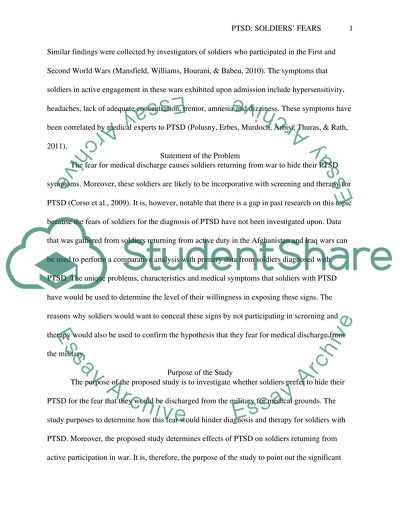Cite this document
(“TRAUMATIC STRESS DISORDER: SOLDIERS FEARS OF MEDICAL DISCHARGE FROM Dissertation”, n.d.)
TRAUMATIC STRESS DISORDER: SOLDIERS FEARS OF MEDICAL DISCHARGE FROM Dissertation. Retrieved from https://studentshare.org/nursing/1400658-post-traumatic-stress-disorder-soldiers-fears-of
TRAUMATIC STRESS DISORDER: SOLDIERS FEARS OF MEDICAL DISCHARGE FROM Dissertation. Retrieved from https://studentshare.org/nursing/1400658-post-traumatic-stress-disorder-soldiers-fears-of
(TRAUMATIC STRESS DISORDER: SOLDIERS FEARS OF MEDICAL DISCHARGE FROM Dissertation)
TRAUMATIC STRESS DISORDER: SOLDIERS FEARS OF MEDICAL DISCHARGE FROM Dissertation. https://studentshare.org/nursing/1400658-post-traumatic-stress-disorder-soldiers-fears-of.
TRAUMATIC STRESS DISORDER: SOLDIERS FEARS OF MEDICAL DISCHARGE FROM Dissertation. https://studentshare.org/nursing/1400658-post-traumatic-stress-disorder-soldiers-fears-of.
“TRAUMATIC STRESS DISORDER: SOLDIERS FEARS OF MEDICAL DISCHARGE FROM Dissertation”, n.d. https://studentshare.org/nursing/1400658-post-traumatic-stress-disorder-soldiers-fears-of.


